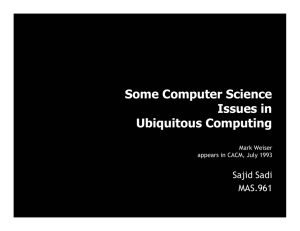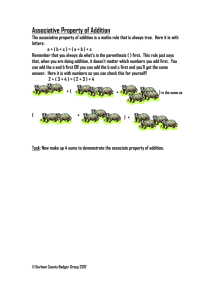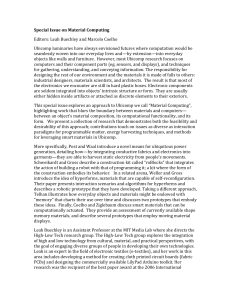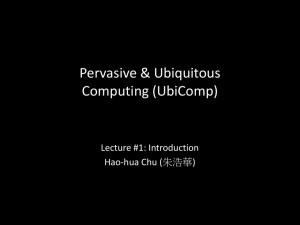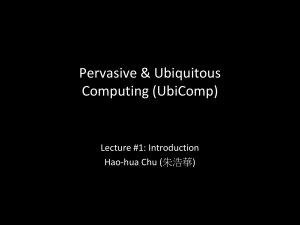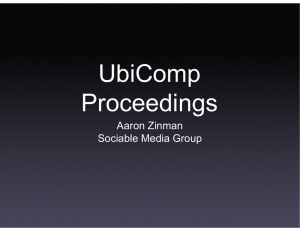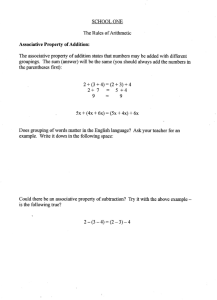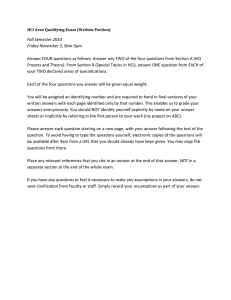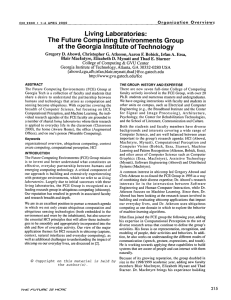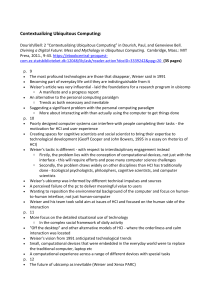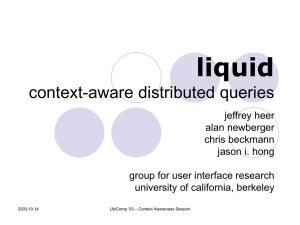Charting Past, Present, and Future Research in Ubiquitous Computing Sajid Sadi
advertisement
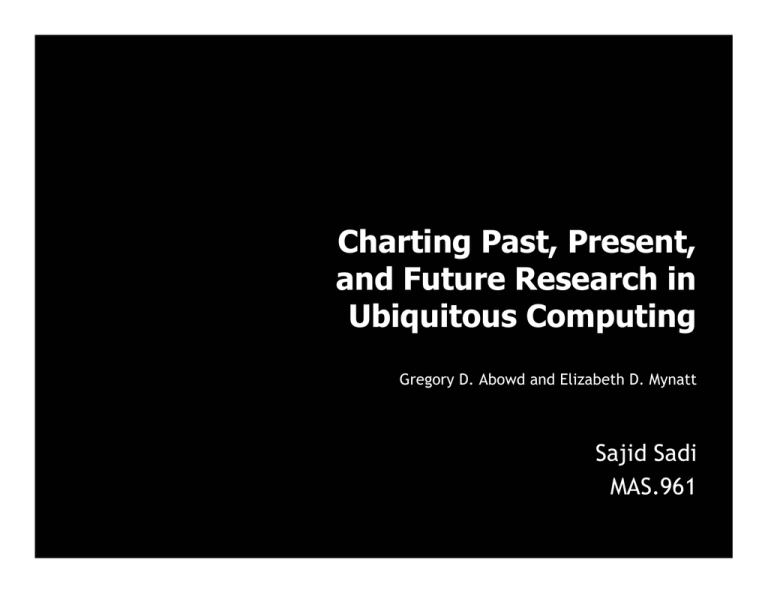
Charting Past, Present, and Future Research in Ubiquitous Computing Gregory D. Abowd and Elizabeth D. Mynatt Sajid Sadi MAS.961 Introduction Mark Wieser outlined the basic tenets of ubicomp in 1991 The physical devices proliferated The software and infrastructure did not Weiser’s vision: Context aware, context capturing devices with natural, robust HCIs Ubicomp: Inherently Scalable Physical scale: Not just the desktop Actually, not even the palmtop Human scale: Acceptable any and everywhere, and at critical mass Temporal scale: Works 24/7, 365 days a year Invites informal and unstructured use Can deal with tasks that neither begin nor end Poster Child: ParcTAB Natural Interfaces Definition: Interfaces that capitalize on expressive ability of humans Speech Gesture Writing Graspable/Tangible Multimodality is also part of it What We Are Missing… Primary natural data types: a secondary class right now Example: Convert writing to text Error correction of natural data Error reduction Error discovery: understanding the task Reusable infrastructure for the above Spend less time reinventing the wheel Context Aware: Scratching the Surface Currently used context: Location: GPS, cell-based, etc Personal info: generally identity + profile Object recognition: bar codes, visual recognition But what is the meaning of context? What is Context? Who: not just who the user is, but whom the interaction is with What: knowing something about the user’s actions (difficult) Where/When: well explored, but difficult indoors Why: divining intent (affective and substantive) More Context Considerations Context representation Context fusion: sensor fusion + context negotiation Augmented reality: context + natural interaction Augmented vision/audio can be a pathway for natural interaction Reality Capture Basic theme: continuous event capture Æ playback on demand Extension: Mine extra information from the capture to annotate or enhance playback Areas to explore: interactive playback, smart annotation, pervasive capture Some hardware issues, but difficulty resides in deriving information Everyday Computing Change in the way humans interact with computers From tool to presence Support for all activities, without bounds Aspects of Everyday Computing Lack beginning and end Natural consequence human interaction: works via action loops repeated across instances Reverse of classical HCI: does not aim for closure Interruptions Many activities are intertwined, sometimes in the background Support needed for these “context switches” Aspect of EC (continued, 2) Multiplexed activities Awareness of background activity Assistance for switching between activities smoothly and with relevance Modulate intrusiveness by background state Time discriminate Pay attention to temporal ordering of actions Account for memory degradation over time Aspect of EC (continued, 3) Addressing associative nature of memory People remember and work associatively Information in associative form is more intuitive and relevant in many cases, because we form associative categories mentally Also inherently supports multiple views Research Directions Continuously present interfaces Peripheral displays with level of detail Smooth transitions between digital and real Peripheral/opportunistic HCI methods Challenge: Evaluation Ubicomp projects tend not to pass prototype state Research ends up technocentric Thoughts on Evaluation Find a human need Have a compelling scenario for usage – do not design the solution in search of a problem Use user studies to inform the grand vision Working with real users shows the actual limits of technology Realistic scenarios can often inform of particular stumbling points and trade-offs Thoughts on Evaluation (2) Test the system in a real context Need to observe user within routine Actual deployment shows assumptions and mistakes of design Provides feedback on the level of observation needed even at small scales Task-centric evaluations are inappropriate Standard usability tests (and settings) are not very useful as well Challenge: Social Issues Control: who watches the watchers, what is being recorded, who has access and when Security of information Privacy concerns Transparency of computer actions (or lack thereof) Legal implications of enabling technology [Business implications] Conclusions Weiser: Compelling applications will drive technology [too limiting] No single application usually drives critical mass acceptance General purpose, fluid utility of ubicomp should drive the technology and research
